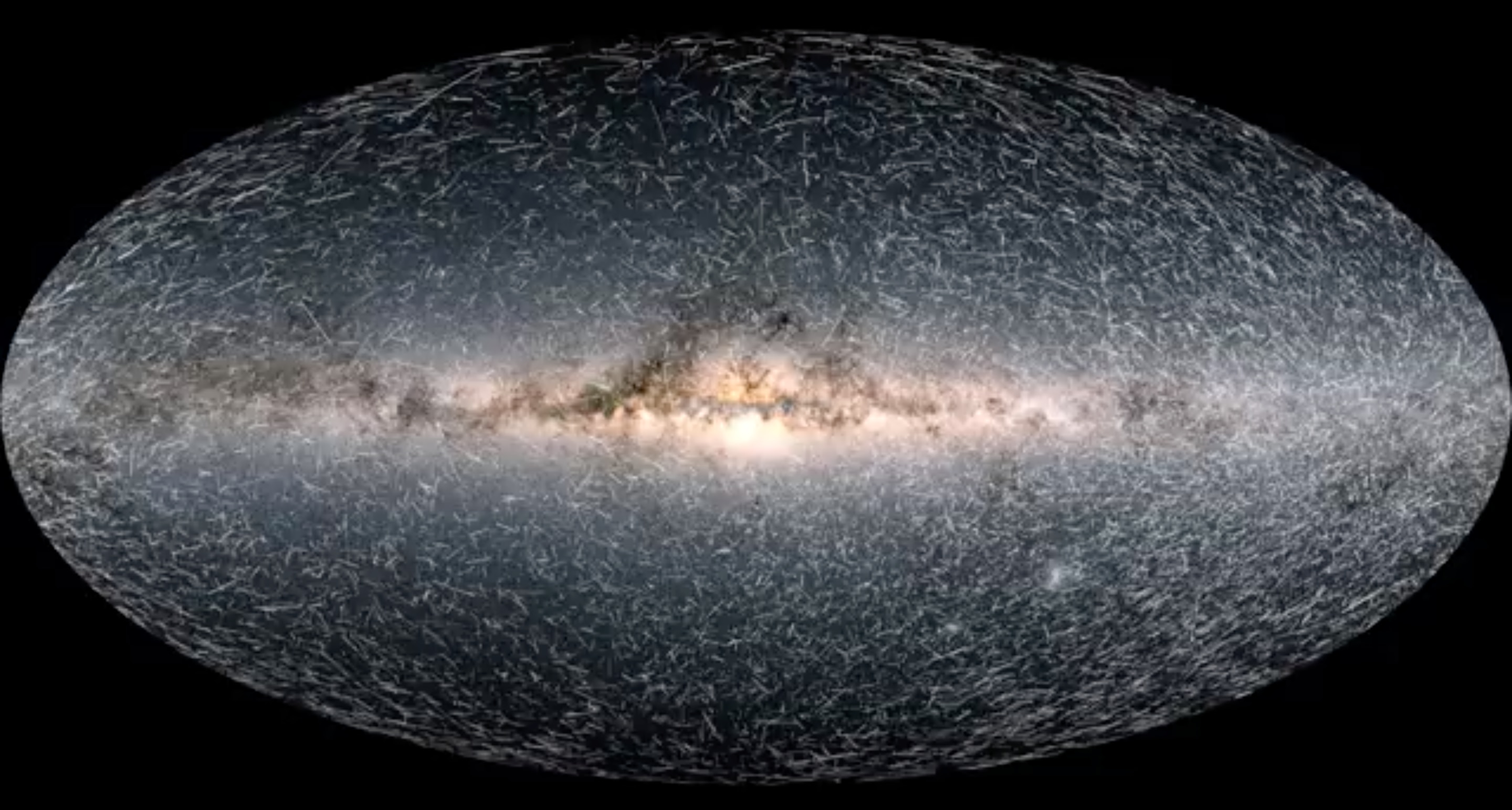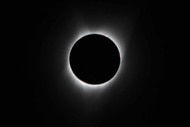Create a free profile to get unlimited access to exclusive videos, sweepstakes, and more!
ESA’s trippy time-lapse video travels 1.6 million years into the Milky Way’s future

What if you could put your eye to a telescope and actually see what our galaxy will look like in the distant future?
ESA scientists just went there. Using the Gaia Early Data Release 3 (Gaia EDR3), they have created an animation that shows the evolution of the Milky Way over the next 1.6 million years, though the final frame backtracks to show our galaxy 400,000 years from now for a less confusing image. It lets you look into the future trajectories of 40,000 stars at a distance of about 326 light-years from the Sun. While this doesn't account for all the stars that exist within those boundaries, it still gives a pretty accurate visualization of how they will travel (relative to the Sun) as they accelerate, decelerate and move closer or further to our star.
“From the knowledge of a star's position on the sky today, and from the distance and motion measured by Gaia, we can predict where stars will appear on the sky in the future,” ESA astronomer Anthony Brown, who led the effort using a code found here, told SYFY WIRE.
What seem to be cosmic spider webs are actually the trails of stars as they migrate over eons. The movements of stars that are further away also appear as shorter lines that do not move nearly as fast as the longer ones—but they were modeled this way because of an optical illusion. You know how something moving really far away seems to move slower and over a shorter distance, but the closer you get, the speed and distance both seem to increase? It’s like that. If you look closely enough, you might also notice that some of the star trails that start out moving faster and further end up moving more slowly, or vice versa. These stars are projected to approach the Sun but to then creep further away.
The simulation also assumes that they are accelerating straight through space. In reality, stars, including our Sun, constantly change the direction in which they move as they orbit around the Milky Way. Orbiting objects are always turning.
Seeing up to 1.6 million years into the future is kind of mind-blowing—but It is important to note that the measurements here also predict the acceleration of the Sun caused by the gravitational force of the Milky Way. That doesn’t mean it this is only a prediction of where the sun will go. The acceleration of the barycenter, or center of mass, of the universe What the animation really shows is how things will appear in our galaxy from the solar point of view, versus the acceleration of the Milky Way alone. It is the acceleration of the solar system’s barycenter (center of mass) that is being represented by the animation.
“The barycenter will only very slowly change over time as the Solar system orbits in the Milky Way and feels the effect of different mass concentrations, such as spiral arms, large molecular clouds, or even the most massive dwarf galaxies orbiting the Milky Way (such as the Large Magellanic Cloud),” said Brown. Over the timescale of the animation, the change in acceleration is not noticeable.”
What made this animation possible was the upgrade to Gaia EDR3 from Gaia DR 2. The EDR3 data gave Brown’s team the advantage of measuring the motions of the stars with much more precision, because this time around, the space telescope has processed many more observations, with much more time elapsing between the first and last observation. The animation above is basically like hitting the fast-forward button on the galaxy. If the stars were shown moving at their actual rate, not only would it be painfully slow to watch, but you’d be sitting there and skeletonizing for 1.6 million years.
Watching the simulation feels like seeing thousands upon thousands of shooting stars flying all over the Milky Way, but they seem to shift to the right side of the screen and leave a void on the left. Things look that way in respect to the motion of the sun, which will make it seem as if all those stars are moving in the opposite direction. This is another optical illusion If you were the Sun, you would notice that as you traveled through the galaxy, stars in front of you would appear to move further apart as you approached them while those behind you would seem to cluster ever closer together throughout your journey.
As Gaia sends more data to Earth, it will not only keep adding to this simulation, but also helping Brown and other ESA scientists create more simulations in this vein.
“The distances and motions will become ever more precise as we collect more data. We can thus make such simulations over larger volumes, different sets of stars, and different time scales,” he said. “We look forward to seeing more of what the solar system will possibly look like when we ourselves are long gone.”














